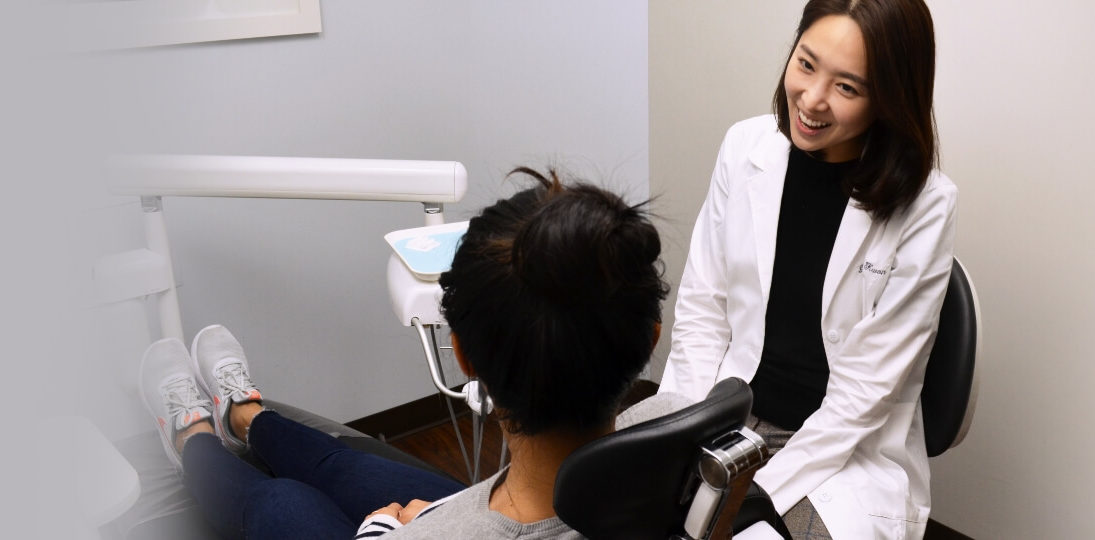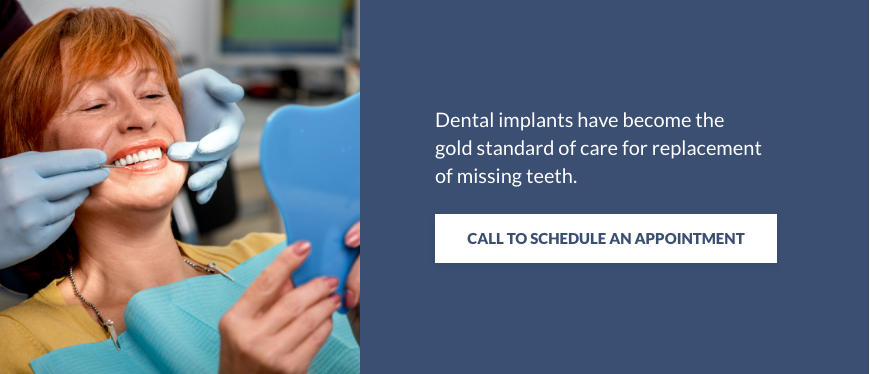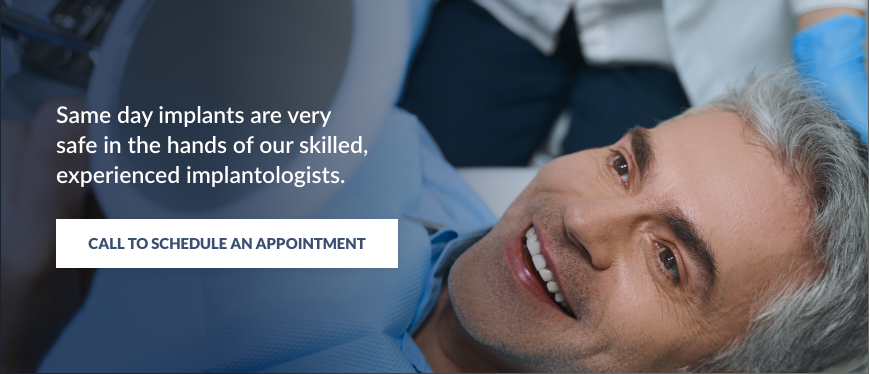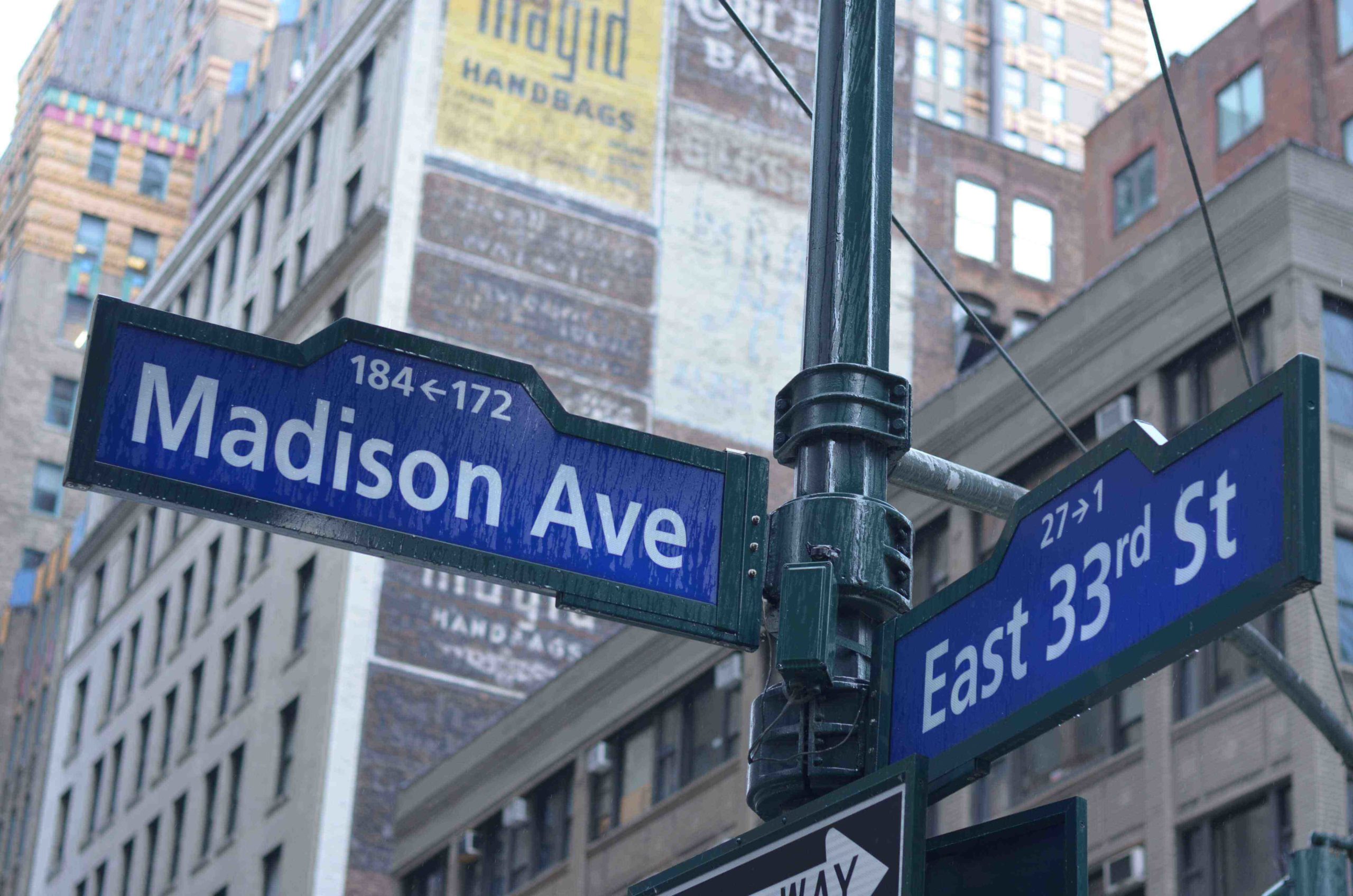What are Dental Implants?
Dental implants have become the gold standard of care for replacement of missing teeth. Years ago if a patient had lost all their teeth (edentulous) the only treatment that we could offer was removable upper and lower dentures. If a patient lost one to four teeth we could construct a fixed bridge which necessitated prepping (grinding down) the surrounding healthy teeth; crowns would be placed on these healthy abutment teeth and false teeth called pontics would be connected to the crowns. This system worked moderately well for over forty years.
Then in 1989, a Swedish physician named Per-Ingvar Branemark (known as the father of modern dental implantology) founded the Branemark Osseointegration Center. The discovery of osseointegration changed everything in modern restorative dentistry. Osseointegration is the ability of the bone to grow into, fuse with a metal root composed of titanium. This titanium root is known as the implant. Branemark’s research showed how the design (shape), chemical composition, surface roughness, loading conditions of the implant will affect how well it will integrate with the surrounding bone. The implant is gently torqued into the bone under local anesthesia. Think of a root that has a hollow chamber running through it. The chamber has threads built into it which will accept a screw-like device. That is essentially what a dental implant is.
Once the titanium implant has integrated with the bone (takes 3-4 months) it has become part of the patient’s jaw. It is incredibly tight. During the time that the implant is fusing to the bone, our implantologist has covered the implant with the patient’s gum (at the time of surgery). After three months the implant is exposed. Now it is time for our restorative, cosmetic dentist to take over. Our cosmetic dentist who has worked from the beginning, in unison with the surgeon to ensure that the implant was placed exactly in the correct place in the mouth to achieve optimal results. The cosmetic dentist now places the second stage in restoring the missing tooth. This stage is called the abutment which is screwed into the implant. The abutment looks like a post jutting out of the implant and above the gum line.
Over this infrastructure of implant and abutment comes the part that patients like the most. It is at this time that the cosmetic dentist will fabricate a beautiful (porcelain or zirconia) crown that will be placed over the abutment, thus completing the case. The shape, shade, occlusion of the crown is a world unto itself. It is the domain of the cosmetic dentist. The coordination of care between specialists is essential for optimal results. At 172 NYC Dental we are a multispeciality office where all the specialists are close colleagues, work under one roof and orchestrate the most amazing results.
Call to Schedule an Appointment
Types of Implant-Supported Prostheses
There are many different types of implant-supported prostheses:
- Single tooth replacement: one implant is placed with an abutment and a crown; this restoration is fixed in the mouth, becomes part of the body and does not come out. Patients can eat, speak, floss and smile with complete confidence
- Implant-supported bridge: Two or more implants are used to restore multiple missing teeth. Abutments are placed on the implants followed by crowns, this time the crowns are joined together by pontics, which are the missing teeth between the implants. These bridges are usually done with very strong porcelain known as zirconia.
- Four on the floor: this is a restoration that is composed of four implants and abutments that holds a prosthesis that is screwed into them. This restoration is used in edentulous mouths where no teeth are present.
- Implant-supported dentures: Patients present with no teeth in the jaw. Two to four implants are placed, a removable bridge (denture) is then constructed to restore all these missing teeth in the mouth. This prosthesis is removable so that patients can easily clean their mouths.
Same day implants NYC requires expertise, planning, and coordination. Preparatory work must be done in advance before we place an implant in your jaw. The patient’s medical and dental history is taken on the first visit. Records are taken which include radiographs (x rays), panorex, and or dental CTscan. Treatment options are discussed only after we listen to your wants and needs. Then a treatment plan is developed specifically for you. Impressions are taken with our Itero scanner. No messy gooey trays are used in our office. From these impressions, transitional teeth will be made that you will wear during the three month osseointegration period. These teeth are given to you the same day that the implants are placed in your mouth. So on that day you will go home with teeth in your mouth.
Advantages of Same Day Dental Implants
Same day implants are very safe in the hands of a skilled, experienced implantologist. Dentists report high success rates with same day implants. In fact, according to the National Journal of Maxillofacial Surgery, there are several advantages to same day implants:
- The implant osses integrates to the bone better
- The soft tissues and gums heal more quickly and are less likely to recede
- Same day implants keep debris away from the tooth extraction socket, which helps with healing
- Patients go home with an immediate restoration, there are no missing teeth when they leave the office.
- In cases where there are extractions, by placing the implant at the same time that the tooth is removed, it alleviates a second surgical procedure and anesthesia for the patient.
The dental team must be careful about how the implants are loaded (pressure placed on them when they are functioning with teeth attached.) Complete osseointegration takes at least three months. So we have developed a hybrid in our office where teeth are extracted, implants are placed and transitional bridges are inserted, all the time allowing the implants to heal. Patients avoid a need for a second surgery and they go home with teeth in their mouths. After the three-month post-op period the magnificent final restoration is made to the delight of the patient and our dental team.













